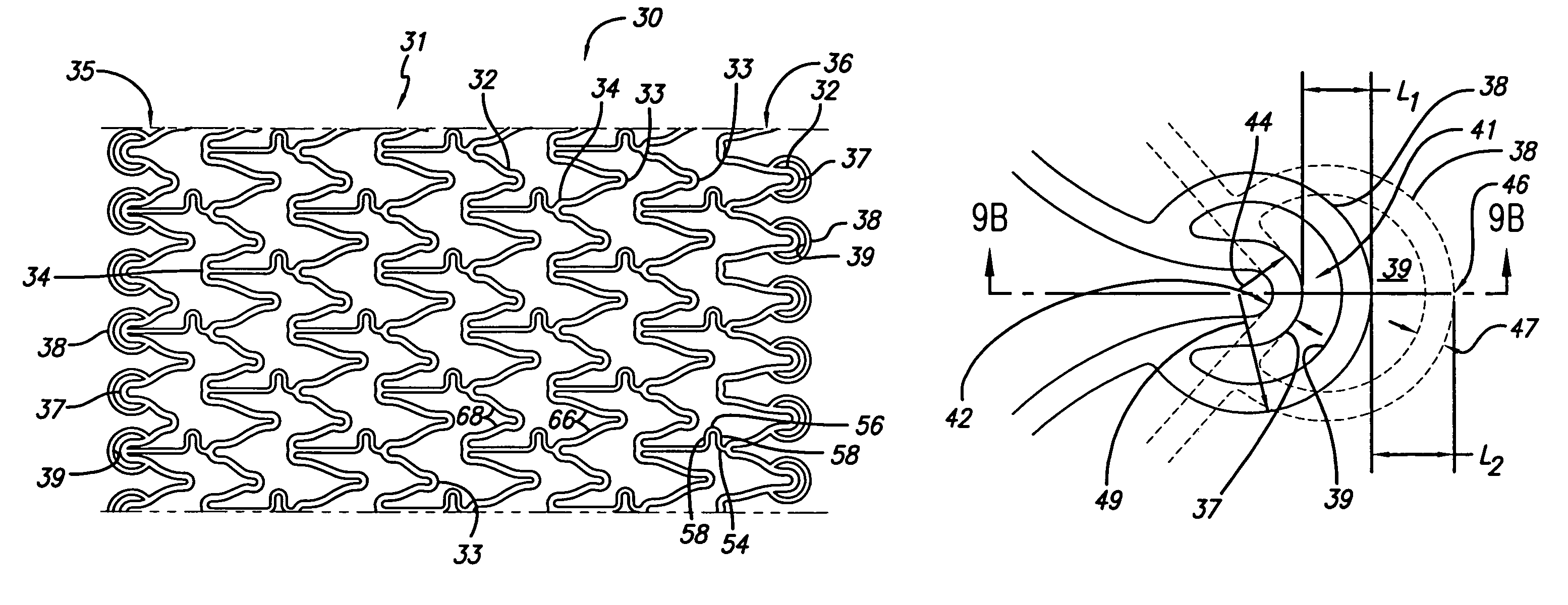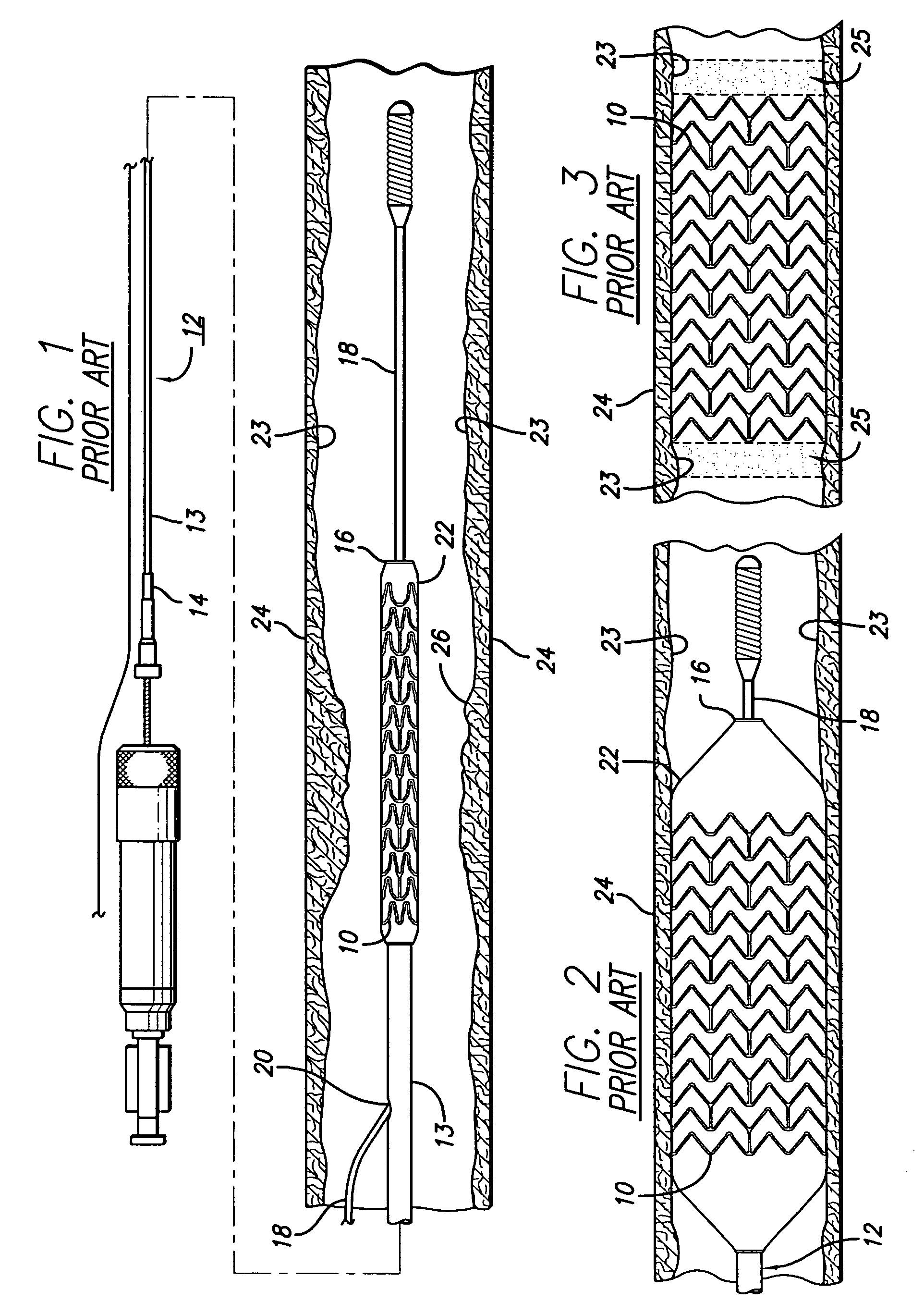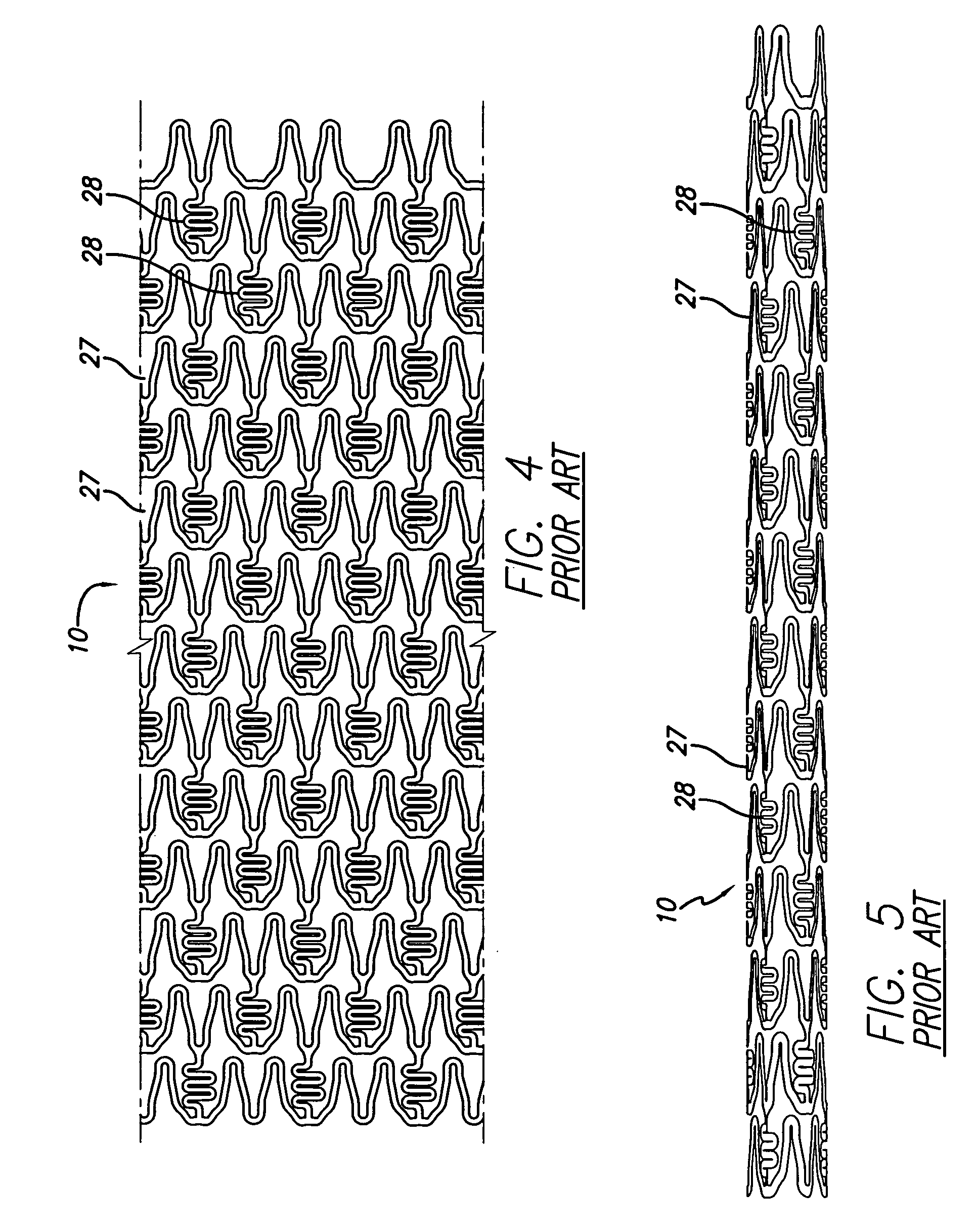Intravascular stent with extendible end rings
a stent and end-ring technology, applied in the field of intravascular stents, can solve the problems of stent end restenosis, development of restenosis, and injury to the arterial wall by non-working length, and achieve the effects of reducing the likelihood of peri-stent end restenosis, facilitating delivery, and being highly flexibl
- Summary
- Abstract
- Description
- Claims
- Application Information
AI Technical Summary
Benefits of technology
Problems solved by technology
Method used
Image
Examples
Embodiment Construction
[0040]The present invention stent improves on existing stents by providing a longitudinally flexible stent having a uniquely designed pattern of expandable cylindrical rings with stent end rings that lengthen as the rings expand radially outwardly. A distal end ring lengthens distally in a longitudinal direction and a proximal end ring extends and lengthens longitudinally in the proximal direction as the stent expands due to the unique and novel twin peak design. The stent can be drug coated so that the therapeutic drug is delivered by the extended end rings to reduce the likelihood of the development of peri-stent restenosis. In addition to providing longitudinal flexibility, the stent of the present invention also provides radial rigidity and a high degree of scaffolding of a vessel wall, such as a coronary artery.
[0041]Turning to the drawings, FIG. 1 depicts a prior art stent 10 mounted on a conventional catheter assembly 12 which is used to deliver the stent and implant it in a ...
PUM
 Login to View More
Login to View More Abstract
Description
Claims
Application Information
 Login to View More
Login to View More - R&D
- Intellectual Property
- Life Sciences
- Materials
- Tech Scout
- Unparalleled Data Quality
- Higher Quality Content
- 60% Fewer Hallucinations
Browse by: Latest US Patents, China's latest patents, Technical Efficacy Thesaurus, Application Domain, Technology Topic, Popular Technical Reports.
© 2025 PatSnap. All rights reserved.Legal|Privacy policy|Modern Slavery Act Transparency Statement|Sitemap|About US| Contact US: help@patsnap.com



